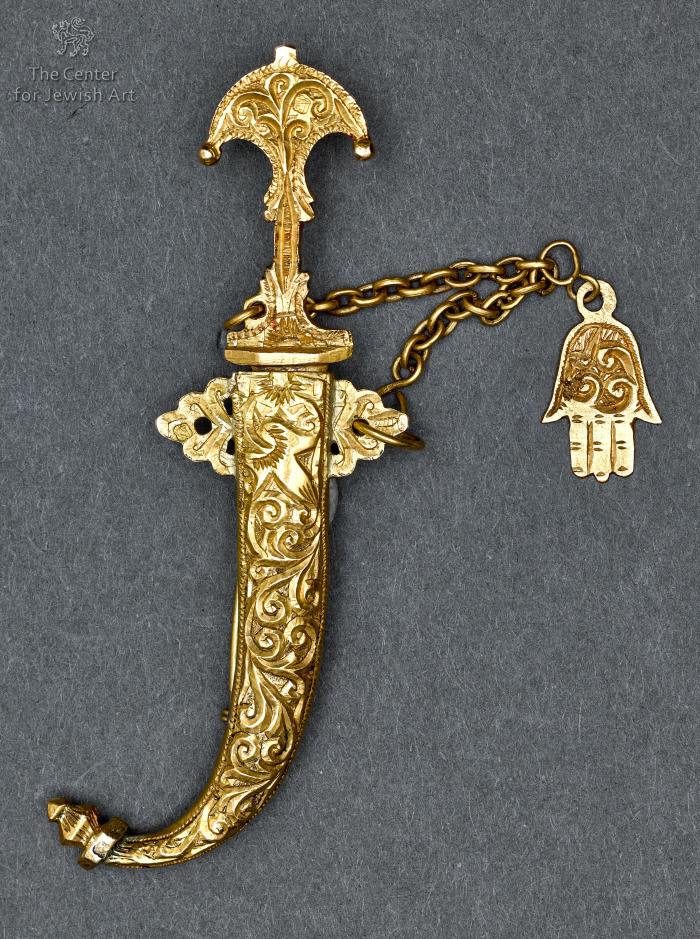Obj. ID: 36970 Amulet, Casablanca, circa 1950

sub-set tree:
The following description was prepared by William Gross:
From earliest times, man has tried to protect himself from misfortune by the use of objects which he considered holy or otherwise (e.g., magically) potent. Amulets and talismans are items generally worn around the neck or wrist, carried in a pocket or purse or hung on a wall. They are meant to protect or aid those who carried or wore them. The Hebrew word for amulet, kame‘a, has the root meaning "to bind". Jewish amulets are usually comprised of texts (either letters or graphic symbols) that are inscribed on some sort of material; some may also contain plant matter or precious stones. The texts of amulets usually include holy names that are believed to have the ability to affect reality, along with incantations summoning angels or other magical powers. For the most part, an amulet has a specific purpose: to ease childbirth, facilitate recovery from illness, improve one’s livelihood, and so on, but in the modern world many are also made for general protection.
Most birth amulets are intended to ward off the evil spirit of Lilith whose intent is to kill a new born child. One of the amuletic symbols used for this is the sword. Representations of this can be found in Jewish cultures as diverse as southern Germany, Kurdistan and Morocco. In Morocco a sword was taken into the house of a woman giving birth and waved in each room to frighten away Lilith. This miniature gold weapon is patterned after the traditional shape of the knife that was worn by Moroccan males. This example was made to be used as a piece of jewelry as was the case of almost all amulets in Morocco. This miniature knife has a small hamsa attached to it as well. A hamsa is an amulet shaped like a hand, It is thought to protect against the “evil eye” and is a popular motif in both Jewish and Middle Eastern jewelry.
The hamsa (five, as in five fingers) is an amulet shaped like a hand. The hamsa is arguably the most popular form of amulet against the Evil Eye and is used in a large number of countries. Probably originating in Moslem Spain of the 12th or 13th century, it crossed the sea to Morocco and spread across North Africa to the Middle and Far East.




